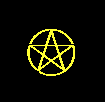
Like Celtic tribes, the Northmen had strong ties with the Earth and the Elements, the Gods, and the "little people." From them come many of our ideas about trolls, dwarves, elves and giants. They believed in an afterlife and the end of the world, or Ragnarok, long before Christians ever infiltrated their culture. Everywhere they went, the Northmen left their cultural influence. When they returned, these Vikings brought with them new ideas, fashions and fads from the countries they visited. The Northmen applied these new ideas to their culture in such a way that it strengthened their position as wolf-warriors and shrewd traders of the northern seas. Norse women were among the most liberated of the time(they could divorce, granted justice, etc). They had a considerable amount of freedom and status. They were housewives, priestesses, wise women, rune-mistresses, healers, and warriors. Women were listened to by their men, especially if they had prophetic dreams or impressions. Dreams were considered important, as they were one of the ways that the Gods contacted humans. The Northmen knew how to live. Their deities were strong, but not immortal. These Gods and Godesses were pictured as men and women, only on a grander scale; wiser, stronger, more beautiful, guardians of humankind. Celtic magic and Norse magic are the only two true Western European magical traditions. They reflect the peoples who believed in them. The Northmen were among the last European societies to fall to Christianity. Norse magic for today fits the type of personality that is a "doer," someone who does not believe in taking a servile approach to life. It interests those who advocate actively shaping their own future. Norse magic enlists the help of the Asa-Gods, the Light Elves and good Dwarves. It also elicits aid from dead ancestors and the rulers of the Elements. It is an active magic, reserved for participants, not by-standers. It is a magic of pride in oneself, courage to face whatever comes and continuing knowledge to mold the results to fit a particular life plan. You must be open to changes and the acceptance of new ideas. You must be willing to study and learn and put into practice the new knowledge. The Asa-Gods do not drop results into your lap. These gods only help those who help themselves. You must attune yourself to the powers of the Elements, calling upon the Asa-Gods and other supernatural beings, and disregarding the old cry that "Magic doesn't work!". Magic works if you think it works. Preparing for magic begins with the subconscious mind, reprogramming it to accept the unseen, the disprovable. True magic is the way of the individual, not society. It manifests itself in self-growth, improvement of life conditions, a restructuring of thought and living. As the Old Norse would say: "May the Gods of Asgard guide your steps. May Thorr's hammer protect you. May Freyja give you wisdom and magical power, and may Freyr grant you prosperity."

See The Elements
The Wiccan believe in a main Goddess(the Lady) and a main God(the Lord), with the Goddess having primary importance. They use certain symbols with a magical significance(the pentagram), they observe Moon phases, they celebrate eight yearly festivals, and they believe in magic. The Goddess is worshipped as a Triple Deity(Maiden, Mother, and Crone). In Norse mythology, the Goddess is Freyja(specifically called "the Lady"). She is also called the Seer, the Great Goddess, Queen of the Valkyries. She is a Moon Goddess and a shape-shifter, the sister of Freyr and daughter of Njord. The pentagram is one of Freyja's symbols. The five points of the pentagram represent the four Elements plus Spirit. It is a favorite symbol of the Wiccan and magicians. Sometimes it is called a pentacle. The Triple Goddess, or the aspects of the Goddess, is represented by Idhunn as the Maiden, Freyja as the Mother, and Hel(Skadi) as the Crone. The three-legged cauldron is a feminine symbol of the Triple Goddess. Idhunn is the keeper of the golden apples of immortality. As the Maiden, Idhunn was and is essential to the continuing of all life. Her color is white. She is the springtime, eternal youth and vigor, the dawn, enchantment, seduction, the waxing Moon. Freyja, as the Great Mother, is the nuturing force behind the life that Idhunn creates. She is the ripeness of womanhood, desired by all the Gods, Dwarves, and Giants. Several of the Norse stories involve some supernatural being trying to wed Freyja or at least seep with her. The Mother is Summer, the day, mother and teacher of life, mourishing, fertility, the Full Moon. Her color is the color of blood and the life force. The Crone, Hel. This aspect of the Goddess is the waning Moon, wisdom, Winter, night, counsel, the gateway to death and reincarnation. Her color is black, the color of darkness where all life rests before being reborn. The Norse God, known as "the Lord," is Freyr, god of fertility and of Yule. He is also called "the Lover." Like the Maiden, Freyr represents life, growth and balance. Thorr corresponds to the Mother as defender of both the Asa-Gods and humans. |